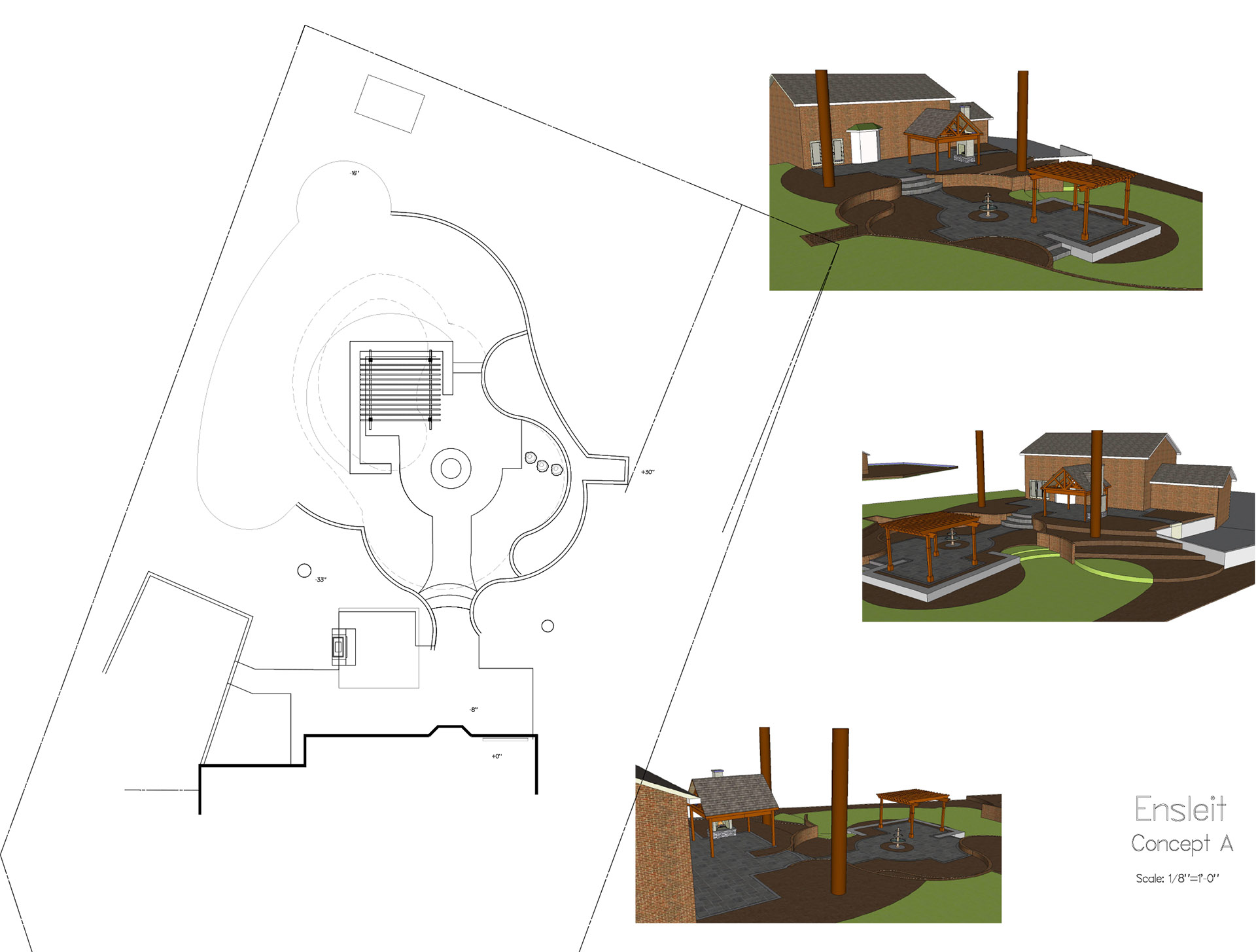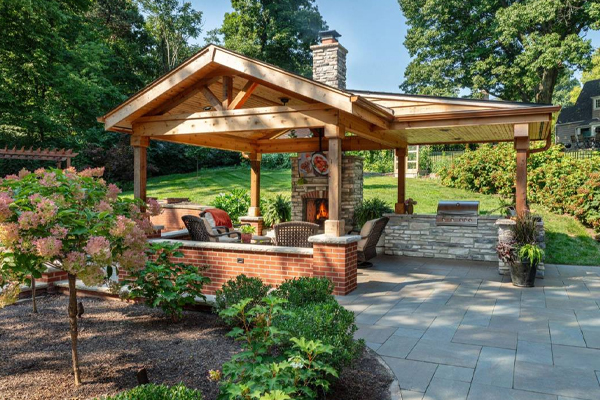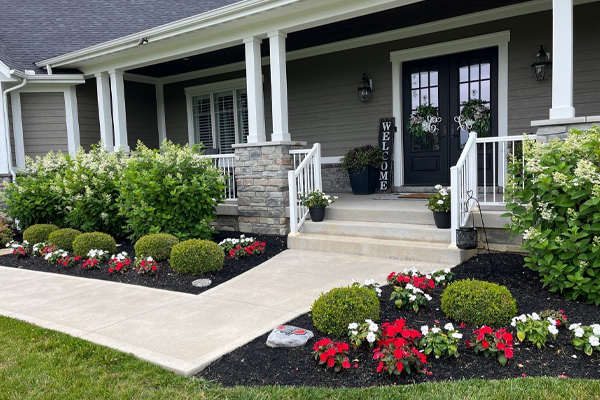Residential Landscape Design: Everything Homeowners Need to Know
The benefits of expert design for your home’s surroundings include:
- Increased curb appeal and home value.
- Beauty in every season.
- Spaces that are designed specifically for your interests and lifestyle.
- Expert plant and tree selection for a yard and garden that will thrive in your specific climate.
- No guessing on which plants are best for your landscaping.
- Quality hardscaping materials and plantlife, selected by knowledgeable professionals.
- Landscaping that’s easier to maintain.
Before you contract with a landscape design company,
it’s a good idea to read up on the basics. Here’s what you’ll learn about in this article:
The Basics of Landscape Design
According to the Association of Professional Landscape Designers, “landscape design is the analysis, planning and design of exterior living spaces.” An expert landscape designer will approach each of these three elements – analysis, planning and design – with careful thought, creativity and knowledge gleaned from experience.
The design drawings you receive from a landscape designer will include both hardscape and softscape elements. What’s the difference?

Hardscaping describes the parts of a design that aren’t growing in your landscaping. For instance, The Spruce says hardscaping includes “any built structure that helps to give your outdoor space function and definition.” When you hear the term “hardscaping” you can think of decks, patios, pergolas, walkways, driveways, retaining walls, fences and so on.

Softscaping involves the living things in your landscape design: trees, shrubs, perennial plants and annual flowers. As the name implies, softscaping elements soften the look of hardscaping materials. Softscaping also brings all the delightful colors, fragrances and textures of plants into your home’s landscape.
- As you might guess, the concept of balance refers to approaching the landscape design as a whole. The overall look of the front yard, back yard, outdoor living spaces, structures and so on should provide visual stability, dignity and elegance.
Formal balance involves repeating the same elements on both sides, creating a sense of order, symmetry and formality. In contrast, informal balance allows for asymmetry and variation between sides, adding interest and movement to your landscape. The style of your home will guide your landscape designer’s choices regarding balance.
- Focal points are key to giving your landscaping a sense of order. These essential elements draw attention, create interest and guide the viewer’s eye through the space. When we design a residential landscape, we might choose a special tree, water feature, pathway or gazebo as a focal point.
Breaking the monotony of a landscape is the role of focal points. In other words, focal points give the eye somewhere to rest.
- Think of unity as the thread that weaves through your landscape design, organizing the elements into harmonious groups that create a pleasing and cohesive whole. Just as every great story has a plot, your landscape design should follow a unifying storyline.
As our designers talk to you and your family, we will begin to identify the theme or story of your landscaping. This theme could be “quiet sanctuary,” “party central” or “bird-lover’s paradise.” Keeping the theme in mind throughout the design process ensures unity and harmony in your landscape.
Of course, at the heart of designing a home landscape is the desire to create beauty and to make spaces functional for the people who live or spend time there. Because beauty and functionality are in the eyes of the beholders, your landscape design team should take the time needed to understand your preferences in terms of color, maintenance requirements and use of your outdoor spaces.
Planning a Landscape Design
Residential landscape design doesn’t happen in a vacuum: It must be based on the actual site and land features of the specific house. For instance, you wouldn’t plan for retaining walls on a flat site or a large swimming pool area in a small urban plot. So, the first task in the designer’s process will always be analysis.
Once you choose a Dayton area landscape designer to work with, they will schedule a time to visit your site. While they can assess the physical attributes of your site on their own, having you, the homeowner, there to walk through the spaces with them is helpful.
During the site visit, the designer will:
- Measure and map your yard, looking at established plantings, beds and existing structures.
- Take note of the style of your home, along with its size, materials and color. A cohesive landscaping design should complement the house or other structures and help create a seamless blend between indoors and out. You and your designer should also discuss views of the landscaping from various points inside your home, as well as how it will look from the curb.
- Analyze the soil type and sunlight patterns. This information aids the designer in choosing the right plants for the right spots in your landscape. If you have them, you can share photos of your landscaping at various times of the year.
- Look for issues that might affect the design, like poor drainage, structures that need repair or disease in current trees or plantings. If your neighborhood has codes or guidelines concerning landscaping materials, you should share those with the designer.
Either on site or in a follow-up meeting, you and your landscape designer or landscape architect should discuss your vision, goals and priorities for your outdoor spaces. This is the time to share your “nice to have” and “must have” lists with the designer. Maybe you’d love to have a pool and a spa to keep your kids and their friends entertained. You might have a fully equipped outdoor kitchen in mind. Or maybe you’d like a patio with a fire pit where you can spend evenings with friends or family members.
Maintenance is another topic to discuss. Do you enjoy yard work or would you rather turn those tasks over to a professional? Would you like to have a water feature complete with fish to care for and enjoy or is “low maintenance” your mantra?
Other factors to share with your designer include:
- Who will use the outdoor spaces?
- At what times of the day would you like to use outdoor living areas?
- Would you like some space to grow vegetables?
- Do you have pets that will spend time outside?
- Would you like to add exterior lighting to your landscape plan?
Budget is always a consideration. Being upfront with your designer about how much you plan to invest in your landscaping is a smart move. Knowing the limitations will keep everyone on track and save time during the design process. After all, efficient planning means your landscaping will be done and ready for you to enjoy that much sooner.
In this exciting process of imagining your residential landscape design, it’s a smart idea to keep an open mind. Your designer will suggest things you may not have known about or considered previously. You could find out that some design elements are outside your budget or won’t make sense on your lot. You could also discover that you can afford more than you thought possible.
Fortunately, unlike a kitchen renovation, a landscaping design can be implemented in phases to accommodate your schedule or budget. An inground pool and patio could be installed this year, followed by front yard beds the next year, with a backyard fire pit area built the year after that. Feel free to discuss a phased approach to your landscaping project with your designer. They will help you decide which projects should be tackled first and which can wait.
Design Principles & Concepts
As we touched on earlier, the goal for every landscaping plan is to create a cohesive design. Once you meet with your designer and they have analyzed your home’s site, they can begin mapping out their design ideas.
The theme or style you and your designer have agreed on will play a major role at this point in the design process. You might be looking for landscaping that is sleek and modern, rustic or cottage style. The designer will integrate your preferred colors or plant selections into the design when possible. Your residential landscape design plan can also incorporate exciting amenities like water features or comprehensive outdoor lighting.
The design process will involve careful collaboration with you as the homeowner. When the first designs are presented, be sure to take the time you need to consider them carefully. Ask questions about anything you don’t understand and “walk through” the plan with your daily activities in mind.
It’s normal to request revisions to the plan: Nothing should be finalized until you’re completely comfortable with the design. Keep in mind that it’s always easier to make changes while your project is in the planning stages instead of when the landscaping crew has begun work on your site.
Hardscaping Elements
You’ve heard the term “good bones” applied to houses. In landscaping design, hardscaping represents the good bones. These permanent structures can define areas, move people through the site, provide for seating spaces and alter topography of the land when necessary.
Your residential landscape plan could include a range of hardscaping elements such as:
- Retaining walls.
- Terraces.
- Stairs.
- Outdoor fireplaces or fire pits.
- Outdoor kitchens or grill islands.
- Fences.
- Pathways and walkways.
- Decks.
- Patios.
- Pergolas, gazebos or pavilions.
- Pools and pool surrounds.
- Retaining walls.
- Terraces.
- Stairs.
- Outdoor fireplaces or fire pits.
- Outdoor kitchens or grill islands.
- Fences.
For each of the elements, there are a wide variety of materials to choose from. Your designer will walk you through the choices and help you make selections based on your budget, style preference, ease of maintenance and other factors.
Take a patio, for instance. It could be constructed of brick, pavers, natural stone or stamped concrete. Each material will have a different look, different price point and expected lifespan.
If you already have your heart set on a certain material, let your designer know. In fact, the more you can share inspiration photos or material samples with your designer, the better. Oftentimes, pictures are worth more than a thousand words.
When it comes to placing hardscape elements in your yard, your landscape designer will consider a range of factors to ensure functionality, aesthetics and harmony with the natural environment. Here are some key considerations:
- Function and purpose: Your designer will Identify the purpose of the hardscaping elements. For example, patios, decks and fire pit areas are for outdoor living and entertaining. Paths and stairways provide access. Retaining walls manage slopes and prevent erosion.
- Traffic flow: Hardscaping should help you and your family and friends move through the space. Pathways should connect key areas like entrances, gardens and seating areas, but should not create obstacles or pinch points. Curved paths can add a sense of mystery and discovery, while straight paths provide direct access.
- Topography: It’s critical that your landscape design professional literally knows “the lay of the land.” By understanding slopes, elevations and drainage patterns, the designer can carefully place retaining walls, terraces and other elements to manage water flow and soil stability.
- Soil type and drainage: Hardscaping should add to your landscaping, not cause issues. That’s why it’s important for your designer to assess soil conditions and drainage. With this information, structures can be properly supported and water won’t pool or cause erosion.
- Sun and shade: Tracking sun exposure and shade patterns throughout the day allows for better placement of seating areas, patios and other features.
- Balance and proportion: Hardscaping elements should be in proportion with the size of the property and other landscape features. Balancing formal and informal elements creates a cohesive look.
- Accessibility: Pathways, patios and other elements should be accessible and meet the needs of all users, including anyone with mobility issues.
- Maintenance: Choosing durable materials that are easy to maintain and appropriate for the local climate just makes sense. Your designer will consider the long-term upkeep of each element.
- Safety: Incorporating safety features such as non-slip surfaces for walkways, adequate lighting for pathways and steps, and appropriate heights for walls and railings will ensure that your home’s landscaping will be free from hazards.
Softscaping Elements
Bring on the green things! Now that the structure of hardscaping is in place in your home’s outdoor design, it’s time to talk about plants.
Softscaping elements in your landscape design could include:
- Grass and grass alternatives.
- Ground cover.
- Trees and shrubs.
- Annual flowers and perennials.
- Vegetable plants and fruit trees or bushes.
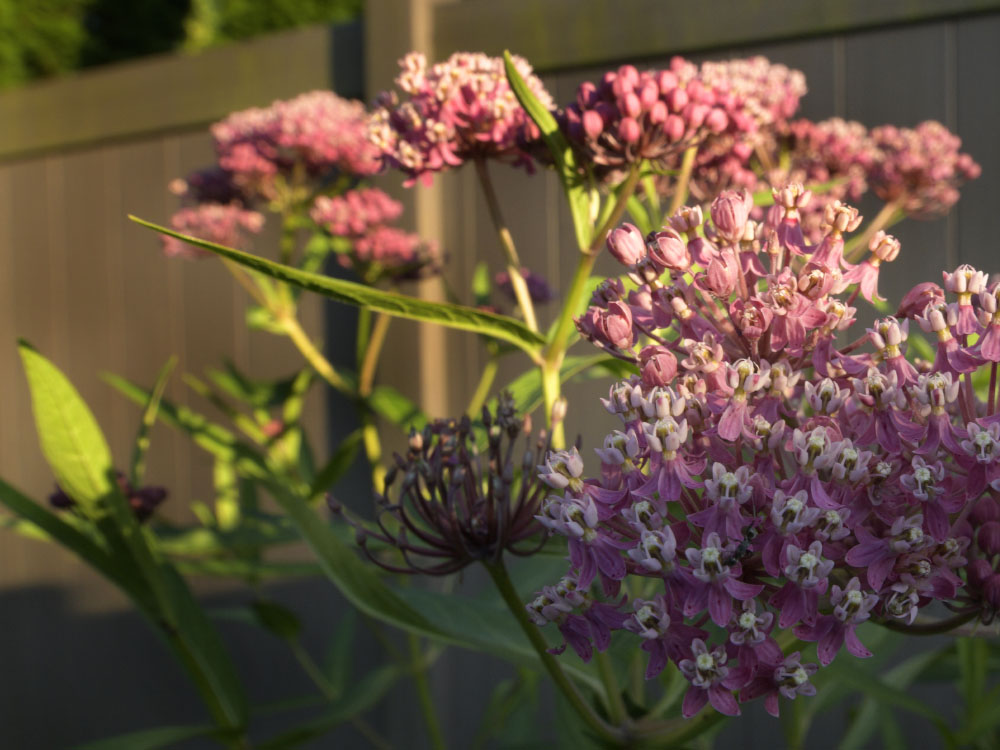

Together, these growing elements will be employed by the landscape design pro to create layers, texture and a color story in your landscaping.
Just as with hardscaping materials, plant materials should be selected with an eye toward your preferences for style, ease of maintenance and even the need for privacy in your yard. Your designer will also keep factors like these in mind when selecting plant life:
- Growth habits.
- Need for sun or shade.
- Climate compatibility.
- Your property’s soil type.
- Seasonal interest.
- Benefits of biodiversity.
- Availability of water.
- Existing vegetation.
Sustainable Landscaping Practices
Your landscape architect or designer may suggest environmentally friendly materials and construction practices for your project. You might consider permeable surfaces instead of pavement to allow water infiltration and reduce runoff. You could plan to preserve natural elements when possible, for instance by working with existing trees and plants. Drip irrigation and rainwater harvesting can help conserve water and allowing for composting can cut down on landfill waste.
As your landscape design is developed, it should include your preference for native or exotic plants. Using plants that are native to Ohio, like Black Eyed Susan or Eastern Redbud trees, offers a wide range of benefits:
- Adaptation to the local climate: Native plants are well-adapted to Ohio’s climate and soil conditions. They require less water, fertilizers and pesticides compared to non-native plants, making them more sustainable and environmentally friendly.
- Erosion control: With their deep root systems, native plants help prevent soil erosion and improve soil structure.
- Water conservation: Native plants are adapted to local rainfall patterns, so they often require less irrigation.
- Wildlife support: Native plants provide essential habitats and food sources for local wildlife. They make a good option for your landscaping if you enjoy seeing birds and butterflies. Native plants support biodiversity and help maintain healthy ecosystems.
- Pollinator attraction: Many native plants attract and support pollinators, which are crucial for the reproduction of crops and plants.
- Lower maintenance costs: Native plants generally require less maintenance, because they don’t need as much watering, fertilizing or pest control.
- Resilience to pests and diseases: Over the years, native plants have built up natural defenses against local pests and diseases, reducing the need for chemical interventions.
- Natural beauty: Native plants can contribute to the natural beauty of your home’s landscape and provide a sense of place.
Special Features and Enhancements
Outdoor living spaces have become a top amenity for today’s homeowners and buyers. Whether it’s a simple sitting area or a fully equipped space for preparing food, dining, swimming and lounging, everyone has a vision for their outdoor spaces.
Our Dayton-area landscape design team can help you narrow down your choices and put your ideas for outdoor living onto paper. Take the time to discuss with your family what elements you would like in your landscaping.
The possibilities are wide open and include things like:
- Outdoor grill islands.
- Outdoor kitchens.
- Pizza ovens.
- Fire pits and fireplaces.
- Seating areas.
- Dining areas.
- Recreational areas like sport courts or cornhole setups.
- Pools and spas.
- Dog runs.
- Outdoor grill islands.
- Outdoor kitchens.
- Pizza ovens.
- Fire pits and fireplaces.
- Seating areas.
- Dining areas.
- Recreational areas like sport courts or cornhole setups.
- Pools and spas.
- Dog runs.
Be ready to talk to your designer about who will use these amenities and at what times of day. This information will help ensure the design fits your lifestyle and needs.
Maintenance and Upkeep
Having your landscape continue to look great and thrive for many years depends on the quality of its maintenance and upkeep. Some tasks will need to be done regularly, and some can be completed just once a season. Consider this schedule when doing the work yourself or partnering with a landscaping company:
Bi-weekly:
- Edge beds
- Spray or pull weeds
- Assess the general health of plants
- Selectively prune
- Blow debris from sidewalks or other hard surfaces
- Remove debris as necessary
Spring:
- Edge beds and along pathways and driveway
- Treat pre-emergent weeds
- Prune plants as applicable
- Remove debris
- Clean up decks, patios or pool area
Summer:
- Apply insecticide or fungicide as needed
- Power wash pool deck
- Clean, sand and seal patios
- Service outdoor lighting
- Install outdoor audio equipment as desired
- Clean or seal decks
- Implement necessary drainage solutions
- Repair or grade gravel driveways
- Install or maintain drip irrigation
Fall:
- Cut back perennials/deadhead
- Remove leaves and debris from bed areas
- Prune as recommended
- Trimming and edging
- Remove spring annuals
Color in Every Season
Homeowners enjoy container plants for the ability to bring color and visual interest to a variety of places around the home, from front door to back deck. The Site Group’s seasonal container program offers containers curated according to your preference.
- Tell us what you like and dislike.
- We grow and design containers just for you.
- Our team delivers the containers directly to your home each season (spring/summer, autumn and winter decor).
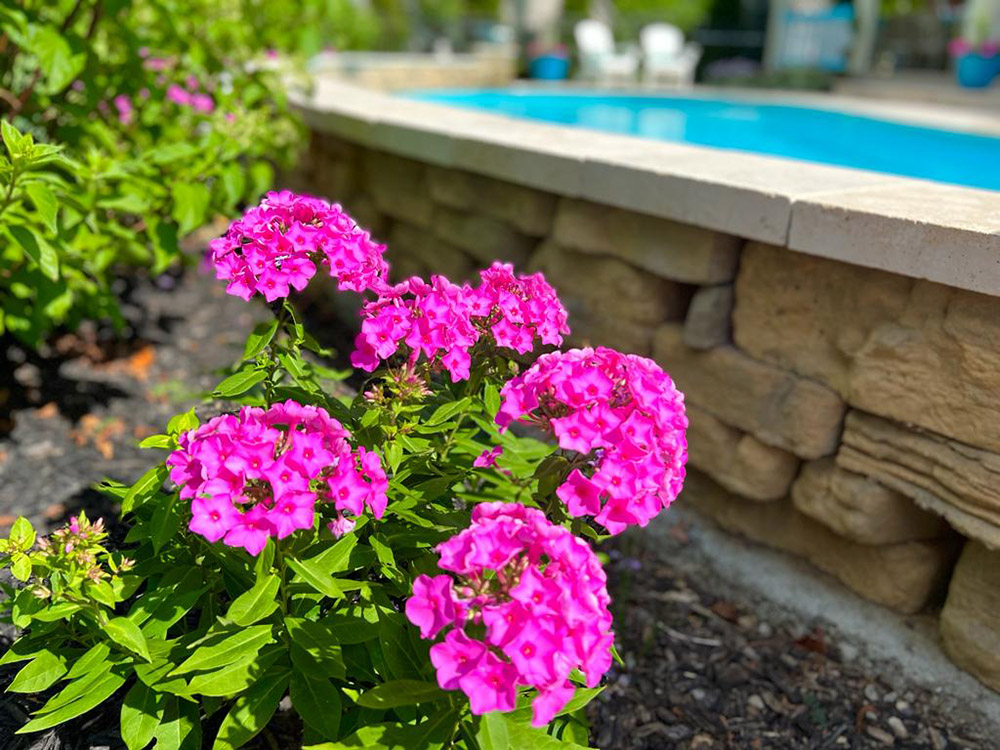
Hiring a Professional Landscape Designer
At The Site Group, we understand that you want to make informed decisions when it comes to your landscaping projects. As you compare Dayton landscape designers, here are 15 key questions to ask:
1. What is your background and experience in landscape design?
This helps gauge the designer’s level of expertise and familiarity with various design styles and techniques.
2. Do you have any formal training or certifications in landscape design?
Professional credentials can indicate a higher level of knowledge and commitment to the field.
3. Can you provide examples of past projects or a portfolio?
Reviewing past work gives insight into the designer’s style and quality of work.
4. Do you have references from previous clients?
Contacting references can provide firsthand feedback on the designer’s professionalism, reliability, and quality of work.
5. What is your process for developing a landscape design?
Understanding the process helps you know what to expect in terms of collaboration, timelines and deliverables for your project.
6. How do you incorporate my ideas and preferences as a homeowner into the design?
It’s important to ensure the designer will listen to and incorporate your vision and requirements.
7. How do you handle revisions and changes during the design process?
Knowing this upfront can help avoid misunderstandings and additional costs later.
8. What services do you offer?
Many designers work on the staff of a landscaping company that offers installation and maintenance services.
9. Do you specialize in any particular types of landscapes or styles?
Ensure the designer’s expertise aligns with your desired style and type of landscape.
10. What is the design fee structure?
Understand what is included in the fee.
11. Do you provide an estimate of the total project cost?
A rough estimate helps you plan your budget and understand the potential financial commitment. Ask about potential extra expenses, such as permits, materials or unexpected site issues.
12. What is your current availability and estimated timeline for the project?
Ensure the designer’s availability aligns with your desired start and completion dates.
13. How do you incorporate sustainable practices into your designs?
If sustainability is important, ask about the designer’s approach to eco-friendly landscaping and use of native plants.
14. Are you familiar with local regulations and climate conditions?
Local knowledge is crucial for creating a landscape that thrives in Southwest Ohio’s environmental conditions and complies with regulations.
15. How often and through what means will we communicate during the project?
Regular and clear communication is essential for a smooth project, so establish expectations upfront.
Planning Your Residential Landscape Design
Now that you know more about the process of landscape design, the key considerations and essential elements, it’s time to begin your project. The Site Group designers and installers are eager to meet you and hear about your vision.
Don’t let another season go by! Contact us today to get the ball rolling.
The 7 Steps to Landscape Design and Installation
Landscape design visually transforms outdoor spaces and helps properties stay beautiful year-round. Here are 7 steps to landscape design.
Design Front Yard Landscape for Curb Appeal
Expert knowledge is needed to design front yard landscape and enhance curb appeal. Create a welcoming entrance and enhance property value.

